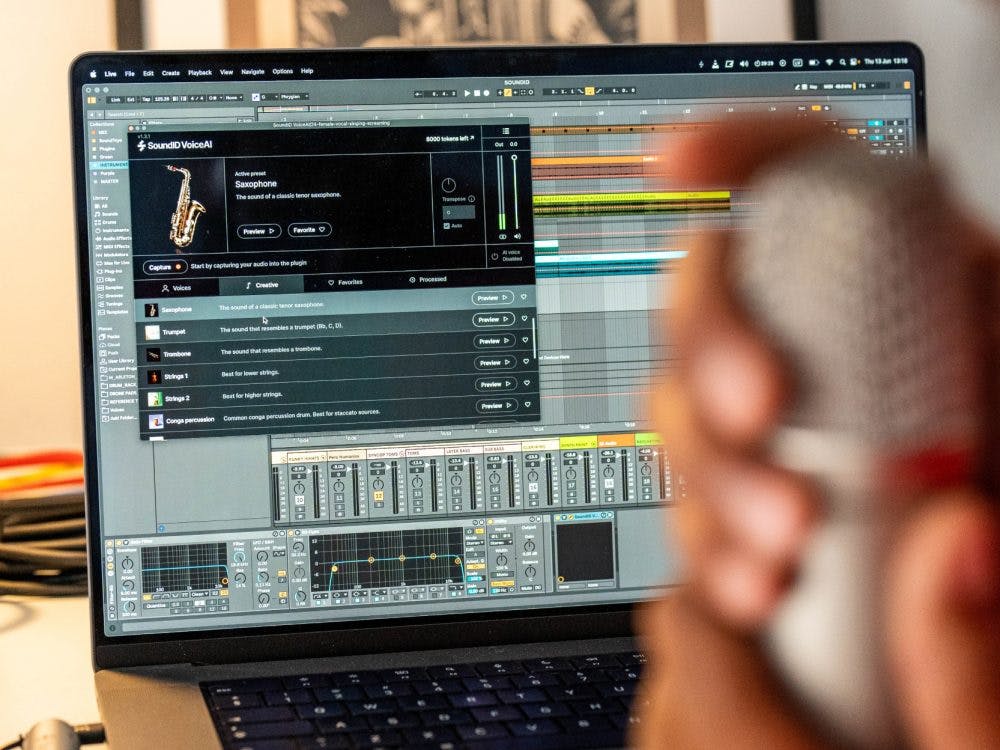Creating drum tracks using only your voice involves mastering beatboxing techniques and vocal percussion methods that transform your mouth into a complete drum kit. The most effective approach combines fundamental vocal sounds like ‘B’ for kick drums, ‘K’ and ‘T’ for snares, and breath techniques for hi-hats, then records and layers these elements using digital audio workstations with proper microphone techniques and audio processing.
Getting started with voice-based drum production
Voice-based drum production transforms your vocal cords and mouth into a versatile percussion instrument. This technique, rooted in beatboxing and vocal percussion traditions, has gained popularity among musicians and producers who want to create rhythmic foundations without traditional drum kits.
Beatboxing represents a legitimate music production method that many professional artists incorporate into their recordings. The appeal lies in its accessibility and unique sonic character that differs from programmed or acoustic drums.
Modern producers embrace vocal drumming because it offers immediate creative expression without requiring expensive equipment or studio space. You can develop ideas anywhere, anytime, making it particularly valuable for songwriting and demo production.
What techniques can you use to mimic drum sounds with your voice?
The foundation of vocal drumming rests on specific mouth positions and breathing techniques that replicate traditional drum sounds. Each drum element requires different vocal approaches and practice methods.
For kick drum sounds, use deep ‘B’ sounds produced from your chest voice. Position your lips loosely together and release a burst of air while vocalising the ‘B’ sound. The key is controlling the air pressure and adding slight pitch variation for different kick tones.
Snare drums come from sharp ‘K’ and ‘T’ sounds created with your tongue against the roof of your mouth. The ‘K’ sound mimics the snare’s attack, while combining it with breath creates the characteristic snare buzz. Practice alternating between clean ‘K’ sounds and adding subtle vocal fry.
Hi-hats require mastering breath control and ‘Ts’ sounds. Create closed hi-hats with short, sharp ‘Ts’ sounds, and open hi-hats by extending the breath release. The positioning of your tongue and the amount of air flow determines the hi-hat’s character.
Cymbal crashes involve combining breath sounds with vocal elements. Start with a sharp intake of breath followed by a sustained ‘Sh’ sound, varying the intensity and duration to match different cymbal types.
How do you record and layer vocal drum tracks effectively?
Recording vocal percussion requires attention to microphone selection and proper recording environment setup. Dynamic microphones often work better than condensers for beatboxing because they handle the sudden air bursts and varied dynamics more effectively.
Position yourself consistently relative to the microphone, typically 6-8 inches away, to maintain uniform sound levels across different drum elements. Use a pop filter to manage plosive sounds from kick drums and breath-heavy techniques.
Multi-tracking involves recording each drum element separately rather than performing everything simultaneously. Start with your kick drum pattern, then add snare, followed by hi-hats and other percussion elements. This approach gives you better control over individual elements during mixing.
Timing considerations become crucial when layering multiple vocal tracks. Use a metronome or click track to maintain consistent timing across layers. Consider recording slightly ahead of the beat for certain elements to create natural groove and swing.
What tools and software help enhance voice-recorded drum tracks?
Digital audio workstations suitable for vocal drum production include Logic Pro, Ableton Live, Pro Tools, and Reaper. These platforms offer the multi-tracking capabilities and audio processing tools necessary for professional vocal percussion production.
AI music production tools have revolutionised vocal drum creation. Modern voice-to-instrument software can transform beatboxing performances into realistic drum sounds, expanding creative possibilities beyond traditional vocal techniques.
Essential audio effects for vocal percussion include EQ to shape frequency content, compression to control dynamics, and reverb for spatial placement. High-pass filtering removes unwanted low frequencies from snare and hi-hat tracks, while gentle compression evens out performance inconsistencies.
Loop creation techniques involve recording short vocal drum patterns and using your DAW’s loop functions to extend them. Many producers create libraries of vocal drum loops in different tempos and styles for future projects.
How can you develop your vocal drumming skills over time?
Developing breath control forms the foundation of advanced vocal drumming. Practice breathing exercises that strengthen your diaphragm and improve air flow control. Start with simple patterns and gradually increase complexity as your stamina improves.
Daily practice routines should include basic sound isolation exercises. Spend time perfecting individual drum sounds before attempting complex patterns. Record yourself regularly to identify areas for improvement and track your progress.
Rhythm and timing exercises involve practicing with metronomes at various tempos. Start slowly and focus on accuracy rather than speed. Use subdivision exercises, playing quarter notes, eighth notes, and sixteenth notes to develop internal timing.
Expanding your vocal percussion vocabulary means learning advanced techniques like vocal scratches, bass lines, and melodic elements. Study professional beatboxers and analyse their techniques through slow-motion playback and repetitive practice.
Making the most of your voice-created drum tracks
Successful vocal drum production combines technical proficiency with creative experimentation. The key techniques include mastering fundamental sounds, proper recording methods, and strategic use of audio processing tools.
Experimentation drives innovation in vocal drumming. Try processing your vocal drums through guitar amplifiers, granular synthesis, or time-stretching algorithms to create unique textures and rhythmic patterns.
Proper audio calibration and monitoring significantly improve your production process. Accurate speaker and headphone calibration helps you make better mixing decisions and ensures your vocal drums translate well across different playback systems.
The artistic potential of vocal drum creation extends far beyond simple rhythm tracks. Consider vocal drumming as a gateway to broader musical expression, combining it with melodic elements and harmonic content. We at Sonarworks continue developing tools that enhance vocal creativity, recognising the growing importance of voice-based music production in modern audio creation.
If you’re ready to get started, check out VoiceAI today.



